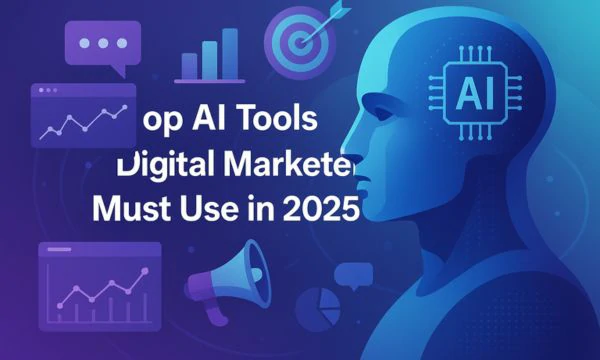
The Power of Influencer Marketing | Strategies for Success

Is influencer marketing in the digital age one of the best ways a brand can reach its target audience? Influencers can help build trust, brand awareness and get sales for your business. In this write-up, we take a look at the power of influencer marketing and how you can use it to achieve success. Indisputably, for all types of businesses – either they are small or large corporations – will enhance your marketing ROI (Return On Investment) if you know and do this the right way. For more insights, check out Forbes: The Benefits and Challenges of Influencer Marketing.
What is Influencer Marketing?
Picture your brand teaming with individuals who have a l Instagram or Twitter following of tens, if not thousands and millions. Influencers are those who endorse products or services to their audience and thus persuade purchasing decisions based on the credibility they have established in front of a particular group. Influencer marketing is markedly different from traditional advertising because it leverages real endorsements and word-of-mouth for brand cultivation.
Benefits of Influencer Marketing
Influencer marketing offers numerous benefits for brands:
- Increased Reach: Influencers have a large and engaged audience, allowing brands to reach potential customers more effectively. This is especially beneficial for new brands looking to establish a presence in the market.
- Enhanced Credibility: Influencers are trusted by their followers, which can enhance a brand’s credibility and trustworthiness. When an influencer recommends a product, their followers are more likely to consider it genuine and worth trying.
- Cost-Effective: Compared to traditional advertising, influencer marketing can be more cost-effective, especially for smaller brands. Collaborating with micro-influencers can yield significant results without the hefty price tag of mainstream advertising.
- Targeted Marketing: Brands can collaborate with influencers whose audience aligns with their target market, ensuring more relevant and effective campaigns. This targeted approach ensures that marketing efforts are not wasted on uninterested audiences.
- Improved Engagement: Influencer content often generates higher engagement rates, leading to better interaction with the audience. Engaged followers are more likely to share content, leave comments, and ultimately make purchases.
Types of Influencers

Understanding the different types of influencers is crucial for developing an effective strategy:
- Nano Influencers: Typically have 1,000 to 10,000 followers. They have a close-knit and highly engaged audience, making them ideal for niche markets and personalized campaigns.
- Micro Influencers: Have 10,000 to 100,000 followers. They are known for their niche expertise and high engagement rates. Micro influencers often have loyal followers who trust their opinions and recommendations.
- Macro Influencers: Boast 100,000 to 1 million followers. They have a broader reach and are ideal for larger campaigns. Macro influencers can help brands achieve significant exposure and visibility.
- Mega Influencers: Have over 1 million followers. They are often celebrities or public figures with massive reach. Collaborating with mega influencers can provide brands with widespread recognition and influence.
For more insights on boosting your online sales quickly, check out our guide on
Driving Online Sales Fast | Effective Strategies for Rapid Growth
.
Strategies for Successful Influencer Marketing
Implementing the right strategies is key to maximizing the impact of influencer marketing:
1. Define Your Goals
Start by clearly defining your marketing goals. Whether it’s increasing brand awareness, driving sales, or launching a new product, having specific objectives will guide your influencer strategy. Clear goals help measure the success of your campaigns and ensure that your efforts are aligned with your overall business objectives.
2. Choose the Right Influencers
Select influencers whose audience aligns with your target market. Consider factors like their follower count, engagement rate, and relevance to your brand. Look for influencers who share similar values and aesthetics to your brand. Authenticity is crucial, so choose influencers who genuinely resonate with your brand message. For more tips, visit Social Media Examiner: Influencer Marketing Tips to Improve Your Strategy.
3. Build Authentic Relationships
Establish genuine relationships with influencers. Engage with their content, understand their values, and ensure your collaboration feels authentic to their audience. Building a strong relationship with influencers can lead to long-term partnerships and more effective campaigns. Treat influencers as partners rather than just marketing tools.
4. Create Compelling Content
Work with influencers to create engaging and authentic content that resonates with their audience. Allow them creative freedom to maintain authenticity. Influencers know their audience best, so trust their judgment when it comes to content creation. Encourage them to share personal stories and experiences with your product to make the content more relatable.
5. Track and Measure Performance
Use analytics tools to track the performance of your influencer campaigns. Monitor metrics like reach, engagement, conversions, and ROI to evaluate success. Analyzing data helps you understand what works and what doesn’t, allowing you to refine your strategy for future campaigns. Regularly review and adjust your approach based on performance insights. Check out Influencer Marketing Hub: What is Influencer Marketing? for more information.
Challenges in Influencer Marketing
While influencer marketing offers numerous benefits, it also comes with challenges:

- Finding the Right Influencers: Identifying influencers who align with your brand and have genuine engagement can be time-consuming. Conduct thorough research and use influencer marketing platforms to find the best matches.
- Measuring ROI: Tracking the exact return on investment from influencer campaigns can be complex. Use specific metrics and KPIs to gauge success, and consider using unique discount codes or affiliate links to track conversions.
- Ensuring Authenticity: Maintaining authenticity in influencer collaborations is crucial to avoid appearing overly promotional. Work with influencers who genuinely use and appreciate your products.
- Managing Relationships: Building and maintaining relationships with multiple influencers requires effort and coordination. Regular communication and transparency are key to successful collaborations.
Case Studies: Successful Influencer Marketing Campaigns
Explore real-world examples of successful influencer marketing campaigns:
1. Daniel Wellington
The watch brand Daniel Wellington leveraged Instagram influencers to showcase their products, resulting in significant brand growth. By providing influencers with discount codes and encouraging user-generated content, they created a community of engaged followers who proudly shared their Daniel Wellington watches. Learn more about this strategy from Shopify: How to Use Influencer Marketing to Grow Your Business.
2. Glossier
The beauty brand Glossier built its presence by collaborating with micro-influencers and leveraging user-generated content. By focusing on real people and their authentic experiences with Glossier products, the brand fostered a sense of community and trust among its audience.
3. Gymshark
The fitness apparel brand Gymshark partnered with fitness influencers to create authentic content, driving massive engagement and sales. By aligning with influencers who embodied the brand’s values and fitness lifestyle, Gymshark created a loyal following and achieved significant growth.
Future Trends in Influencer Marketing
Stay ahead by understanding future trends in influencer marketing:
- Increased Use of AI: AI tools will play a significant role in identifying influencers, predicting trends, and measuring campaign success. AI can help brands analyze vast amounts of data to find the best influencers and optimize campaign strategies.
- Emphasis on Micro and Nano Influencers: Brands will continue to prioritize micro and nano influencers for their high engagement and authenticity. These influencers often have stronger connections with their audience, leading to more meaningful interactions.
- Growth of Video Content: Video platforms like TikTok and Instagram Reels will dominate influencer marketing strategies. Video content is engaging and allows influencers to showcase products in dynamic and creative ways.
- Focus on Long-Term Partnerships: Brands will shift towards building long-term relationships with influencers for sustained impact. Long-term partnerships foster trust and authenticity, leading to more effective and consistent brand messaging.
Additional Strategies for Success
Here are more strategies to further enhance your influencer marketing efforts:
6. Leverage User-Generated Content
Encourage influencers to promote user-generated content (UGC) campaigns. UGC not only increases engagement but also provides authentic and relatable content for your brand. Run contests or campaigns where followers can share their experiences with your products using specific hashtags, and feature the best content on your social media channels.
7. Utilize Influencer Marketing Platforms
Use influencer marketing platforms to find, manage, and analyze influencer partnerships. These platforms provide valuable insights and streamline the process of working with influencers. Popular platforms like AspireIQ, Influencity, and Traackr can help you identify suitable influencers, manage collaborations, and measure campaign performance.
8. Diversify Your Influencer Mix
Don’t rely on just one type of influencer. Mix and match nano, micro, macro, and mega influencers to reach different segments of your target audience. Each type of influencer offers unique advantages, and a diverse influencer mix ensures a broader reach and varied content.
9. Collaborate on Product Launches
Partner with influencers for product launches to generate buzz and excitement. Exclusive previews, unboxings, and live demonstrations can create anticipation and drive early sales. Influencers can provide their honest reviews and showcase the features and benefits of your new product, creating a sense of urgency among their followers.
10. Focus on Storytelling
Encourage influencers to tell stories that resonate with their audience. Authentic storytelling can make your brand more relatable and memorable. Influencers can share personal anecdotes, behind-the-scenes content, and user experiences to create a deeper connection with their followers.

Metrics to Measure Success
Measuring the success of your influencer marketing campaigns is essential to understand their impact and optimize future strategies:
- Reach: The total number of people who see your influencer’s content.
- Engagement: Likes, comments, shares, and other interactions on influencer posts.
- Conversions: The number of people who take a desired action, such as making a purchase or signing up for a newsletter.
- Return on Investment (ROI): The overall return generated from your influencer marketing efforts compared to the cost.
- Brand Mentions: The frequency with which your brand is mentioned in influencer content and social media.
- Sentiment Analysis: The overall sentiment of the audience towards your brand based on influencer content and comments.
Influencer marketing has become a powerful tool for brands looking to connect with their audience in an authentic and impactful way. By understanding the different types of influencers, implementing effective strategies, and staying ahead of trends, businesses can harness the power of influencer marketing to achieve their marketing goals. As the digital landscape continues to evolve, influencer marketing will remain a key component of successful marketing strategies.






